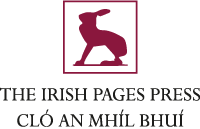MY TIME IN LATRUN
Chris Agee
Under the Green Line – as dawn rose.
I spent part of the summer of 1982 in Palestine and Israel working on a dig run by the French Archaeological Mission in the Middle East. Our beautiful stone headquarters and surrounding encampment was on the hill by the monastery of Latrun, just inside the Green Line within the West Bank, literally a stone’s throw from the Jordanian trenches surrounding a crusader fort – facing the ruins of an ancient Byzantine church (a reputed site for the New Testament Emmaus), and overlooking the scene of a famous tank battle between the Arab Legion and Israeli forces, the broad plane below now dotted with kibbutzim. The fieldworkers were Palestinian and the centre staff Israeli, but the lingua franca was mainly French in the field, and English off-duty. I still remember entirely in French the terminology of our dig near Beit Shemish, in Israel Proper – we were excavating a hill-city of the period “ancien bronze”: 3000-2000 BC, before the “Jews” and “Arabs” there, so-called, were even a twinkle in anyone’s eyes.
My stay was, of course, an eye-opener in every direction – a “blesséd breaker,” in particular, of the accepted Israeli narrative. I got my first feeling for poetic Islam as the dawn rose blue and mauve over the exquisite Palestinian drumlins as the bus drove our large sleepy crew to the site. We listened on the radio in our various holes – mine turned out to be a four-thousand-year-old midden – to the news following Ariel Sharon’s methodical and brutal expeditionary invasion of Lebanon. From my various vantage points at Latrun, Beit Shemish and Jerusalem, the whole cocktail seemed a classic occupation, so I was surprised by the degree to which the Palestinian fieldworkers and Sephardic kitchen staff interacted and related in a way both civil and intimate – something, I imagine, that obtains very much less now.
One afternoon out of the blazing heat I spent an enjoyable half-hour chatting with Michael, the Mission’s Israeli Ashkenazi manager, in the cool of his office, a cornucopia of shade and leaves outside his window – for this was still the pre-air-conditioning period. He wore khaki shorts and a green floppy sun-hat (known in Hebrew, I am told) as “an idiot’s hat”, and an Uzi lay nonchalantly over the papers of his desk. A moment after, I stepped out in the dusty struggling vineyard next to the Mission and began up the hill.
Suddenly a Palestinian about my age – 26 – stepped out of a row of vines and stood before me. He was clearly extremely poor, with ragged trousers, an unbuttoned work-shirt, and ripped sandals. He looked at me intensely – and said only one thing: Palestine, Palestine, Palestine, pointing towards the reddish soil, before vanishing seconds later back into the vines. In the cultural transitions covered by those three minutes, I received an image of the tragic pattern of the West Bank – the European involvement, the Israeli occupation, the Palestinian dispossession – that has not left me as the catastrophe has deepened and accelerated. In that microcosm, the macrocosm of Palestine-Israel was given its full symbolic force.
After the dig, I went to the then-small resort of Eilat on the Red Sea and spent a week lolling on the beaches and snorkelling the amazing Arabian reefs with the other European and North American backpackers. When I got back to Belfast, I stopped into the Crown Bar en route home and bumped into an acquaintance with a paramilitary past (even present?). He looked at my suntan and glared at my brief explanation. Had I heard?
The Israeli Defense Forces had stood by while the Palestinians of Sabra and Shatila – 1948 refugees and their descendants – had been massacred by its Lebanese proxies.


